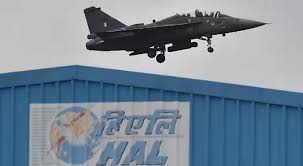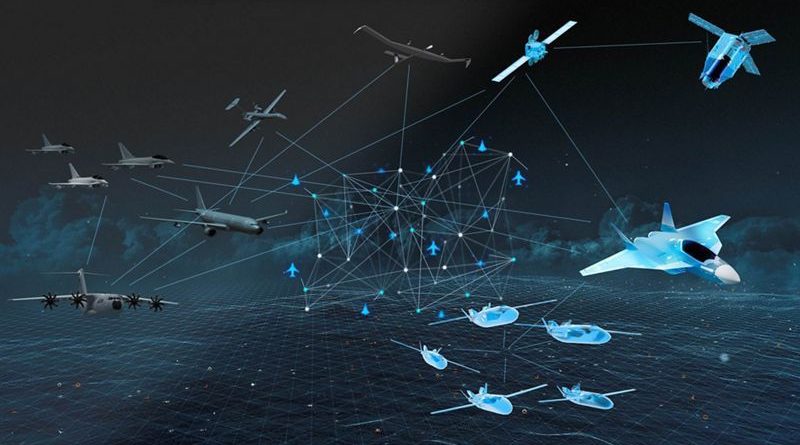My Article was published in the Life of Soldier Journal on April 25.
Hindustan Aeronautics Limited (HAL) has been in the spotlight for its recent achievements and challenges. The company has secured significant defence contracts, including a deal for LCA Tejas Mk1A fighter jets and a substantial agreement for Indigenous helicopters. HAL has also made strides in the Advanced Medium Combat Aircraft (AMCA) program, enhancing India’s aerospace capabilities. However, the company has faced scrutiny over production delays and concerns raised by the Indian Air Force regarding aircraft availability.
The Indian Air Force (IAF) has been a stalwart in the pursuit of indigenisation, a strategic move to reduce dependence on foreign suppliers and bolster national security. Key initiatives include the induction of HAL’s Tejas fighter jets, the Advanced Medium Combat Aircraft (AMCA) development, and the procurement of indigenous helicopters like the Light Combat Helicopter (LCH) Prachand. The IAF’s investments in indigenous UAVs, radars, and advanced weapon systems are a testament to its commitment to enhancing self-reliance. While challenges persist, a collaborative effort between the IAF, HAL, and private industry is pivotal in realising India’s vision of a robust and self-sufficient aerospace defence ecosystem.
India’s journey towards self-reliance in defence aviation has been long and complex, with the Indian Air Force (IAF) and Hindustan Aeronautics Limited (HAL) playing pivotal roles. Achievements, setbacks, and continued aspirations for indigenisation have marked the relationship between these two institutions. While HAL has been the backbone of India’s military aviation industry, the IAF has often raised concerns over delays, quality issues, and technological limitations. This article explores the evolution of this partnership, its challenges, and the way forward for India’s indigenous aerospace ambitions.
HAL was founded in 1940 as Hindustan Aircraft Limited and nationalised in 1964. Over the decades, it has been responsible for manufacturing, assembling, and maintaining various aircraft for the IAF, ranging from early license-built fighters to the Indigenous Tejas fighter jet. HAL has played a crucial role in India’s defence self-sufficiency by working on aircraft like the HF-24 Marut, Dhruv helicopters, and, more recently, the LCA Tejas and AMCA (Advanced Medium Combat Aircraft) projects.
The Indian Air Force (IAF) has always been a strong advocate for the development of indigenous defence production capability, a key result area for the IAF. The IAF has played a crucial role in creating an aerospace ecosystem in India, operating indigenously built aircraft and those built by HAL under licence production, which has given impetus to the indigenous industry in the past. The IAF’s support for indigenised inductions and projects is evident in its involvement in the following initiatives:
-
- Induction of LCA (IOC, FOC, Mk I and Mk 1A) and support to LCA Mk II and AMCA.
- Induction of Ajeet and HF-24 Marut ac in the past.
- Induction of AEW&C ac and support to indigenous AWACS project.
- Induction of indigenous helicopter ALH and support to LCH.
- Induction of Trainer aircraft (Kiran Mk I and Mk II, HT-2, HPT & HTT-40 aircraft).
- Support to the replacement of Avro aircraft through the make-in-India route.
- Integration and operationalisation of Astra Air to Air Missile and Brahmos Air to surface missiles.
- Integration of weapons like the New Generation Anti-tank Missile, Smart anti-airfield weapons, new generation anti-radiation missiles, and Glide bombs.
IAF’s Dependence on HAL. HAL’s contribution to the IAF has been significant, with aircraft like the MiG-21, Jaguar, Su-30MKI, and Hawk trainers being produced or assembled under license. However, the IAF has sometimes expressed concerns over HAL’s efficiency, particularly regarding production delays, maintenance backlogs, and a lack of cutting-edge technology. The slow pace of the LCA Tejas program and delays in upgrades of existing fleets have strained the relationship between the two.
Success Stories: HAL’s Contributions to IAF. Hindustan Aeronautics Limited (HAL) has been the cornerstone of India’s military aviation industry, supporting the Indian Air Force (IAF) for over eight decades. From license-producing early-generation fighters to developing Indigenous aircraft and helicopters, HAL has made significant strides in enhancing India’s self-reliance in defence aviation. Despite facing challenges, its contributions have been instrumental in shaping the IAF’s combat capabilities, a fact that we, as a nation, should deeply appreciate and respect.
HAL’s association with the IAF began with the production of British-origin Hawker Tempest aircraft in the 1940s. However, its true contribution to India’s air power started in the 1960s when it began license manufacturing the MiG-21 under Soviet collaboration. The MiG-21 became the backbone of the IAF for decades, with HAL producing over 600 aircraft. These fighters played a crucial role in conflicts like the 1971 Indo-Pak War and the Kargil War (1999). During the same period, HAL made its first attempt at designing an indigenous fighter—the HF-24 Marut, India’s first home-grown jet. The lessons learned from this project laid the foundation for future indigenous aircraft programs. In the 1980s, HAL was critical in assembling and maintaining the SEPECAT Jaguar, a deep-strike fighter that remains a vital part of the IAF’s fleet. HAL later upgraded the Jaguar under the DARIN modernisation programs, equipping it with modern avionics and weaponry.
Su-30MKI: The Backbone of the IAF. One of HAL’s biggest success stories has been the license production of the Su-30MKI, India’s premier air superiority fighter. Since the early 2000s, HAL has built over 270 Su-30MKIs, making them the most numerous and capable aircraft in the IAF’s fleet. The company has also integrated indigenous systems into the Su-30MKI, such as BrahMos-A supersonic cruise missiles, further enhancing its strike capability.
LCA Tejas: India’s Indigenous Fighter Jet. The Light Combat Aircraft (LCA) Tejas is a landmark achievement for HAL and India’s defence industry. After initial delays, Tejas was inducted into the IAF. The improved Tejas Mk1A, featuring advanced radar, electronic warfare systems, and upgraded weapons, is expected to be inducted soon. Developing the Tejas Mk2, Twin-Engine Deck-Based Fighter (TEDBF), and fifth-generation AMCA showcases HAL’s progress toward advanced indigenous fighters.
Indigenous Helicopters: ALH Dhruv, LCH, and LUH. HAL strengthened the IAF’s rotary-wing capabilities with the Advanced Light Helicopter (ALH) Dhruv and its armed variant, Rudra. Another significant achievement is the Light Combat Helicopter (LCH) Prachand, designed for high-altitude operations in Ladakh and Siachen. HAL has also developed the Light Utility Helicopter (LUH) to replace ageing Cheetah and Chetak helicopters.
The Challenges
Despite HAL’s significant contributions to the Indian Air Force (IAF), several challenges continue to hinder their partnership, affecting operational readiness and modernisation efforts. One of the most pressing concerns is production delays, which have consistently impacted the induction of critical platforms. The slow pace of Tejas fighter production, delays in the upgrade program, and prolonged timelines for overhauls have led to capability gaps in the IAF. These setbacks have forced the IAF to rely on older aircraft, delaying modernisation. Another significant issue is quality control, with HAL facing criticism over the reliability of its manufactured and overhauled aircraft. The users have raised concerns about technical faults, maintenance inefficiencies, and accidents of some HAL-built platforms, leading to questions about overall workmanship and durability. HAL’s slow adoption of new technologies has also affected India’s ability to match global defence standards. Unlike leading aerospace firms, HAL struggles with R&D investments and innovation, leading to dependence on foreign suppliers for engines, avionics, and weapon systems.
The Way Ahead for HAL: Strengthening India’s Aerospace Future
It is time for HAL to leave behind past setbacks, tackle challenges, and move on with renewed determination. Hindustan Aeronautics Limited (HAL) must adopt a multi-pronged approach. Enhancing innovation, investing in R&D, fostering collaborations, and streamlining production can make it a stronger, future-ready HAL that is ready to drive India’s aerospace future, ensuring self-reliance and global competitiveness in defence manufacturing.
Enhancing Production Efficiency. HAL needs to streamline its manufacturing and assembly processes to reduce production delays. Modern automation, digital manufacturing, and lean production techniques can significantly reduce production time. Strengthening supply chains and increasing outsourcing to private-sector firms will also boost production efficiency.
Strengthening Quality Control. HAL must revamp its quality assurance mechanisms to address users’ concerns. A stringent inspection and testing framework at every stage of aircraft manufacturing and overhaul processes will ensure higher reliability and safety. Implementing global best practices and learning from established aerospace giants can help improve production standards.
Investing in Advanced R&D. One of HAL’s most significant drawbacks is its slow pace of technological innovation. To bridge this gap, HAL must increase investments in indigenous research and development (R&D), particularly in engines, avionics, stealth technology, and composite materials. Stronger collaboration with DRDO, ISRO, and academic institutions can accelerate innovation in next-generation aircraft and air combat systems.
Strengthening the Private Sector Collaboration. Public-private partnerships will be key to HAL’s future success. Companies like Tata, L&T, and Mahindra Defence are emerging as strong players in the defence aviation sector. HAL must leverage these partnerships for joint development, co-production, and component outsourcing, improving efficiency and reducing costs.
Reforming Organisational and Management Structure. HAL must transition from a bureaucratic public-sector enterprise to a more agile, corporate-driven entity to compete globally. Introducing performance-based accountability, faster decision-making mechanisms, and strategic planning frameworks will enable HAL to operate more efficiently.
Commitment to Future Programs. HAL must stay committed to high-priority projects like the Tejas Mk II, Advanced Medium Combat Aircraft (AMCA), and Twin Engine Deck-Based Fighter (TEDBF). These programs will define the future of Indian military aviation and ensure long-term self-reliance.
Focusing on Export Potential. HAL must actively market its aircraft, helicopters, and UAVs to international customers. The Tejas LCA, LCH Prachand, and Dhruv helicopters have attracted global interest. Expanding exports will generate revenue and establish India as a key defence exporter.
Conclusion
HAL stands at a crucial juncture and must evolve into a world-class defence aerospace manufacturer. By focusing on efficiency, innovation, private sector collaboration, and exports, HAL can not only strengthen the IAF but also contribute significantly to India’s goal of self-reliance in defence manufacturing (Atmanirbhar Bharat).
Please Do Comment.
For regular updates, please register your email here:-
References and credits
To all the online sites and channels.
Pics Courtesy: Internet
Disclaimer:
Information and data included in the blog are for educational & non-commercial purposes only and have been carefully adapted, excerpted, or edited from reliable and accurate sources. All copyrighted material belongs to respective owners and is provided only for wider dissemination.



